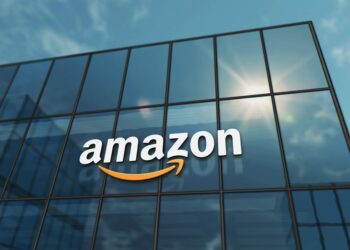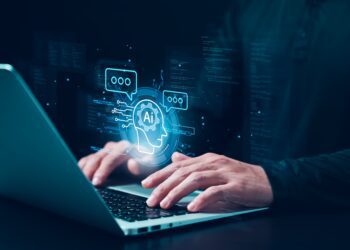The ongoing turmoil in global financial markets is a symptom of global developments driven by three main mega-trends: climate change, technological advancements and an increase in geopolitical tension. These issues are fundamentally transforming the business environment.
While it may be too early to announce “de-globalization”, manufacturing players are fundamentally rethinking their business agendas and global value chain strategies while navigating political upheaval, environmental disasters and technological breakthroughs.
Current global value chain configurations have been devised on the basis of a much more benign business environment. Driven by cost-thinking and optimization, value chains engaged in outsourcing and globalized their supply to achieve greater economies of scale. Lean and “just-in-time” reigned supreme.
Today, however, the business environment has become much more challenging, and global value chains can no longer only focus on cost and service levels. They need to balance efficiency while they build resilience, increase responsiveness and, as regulations tighten and customers become more aware of the negative externalities of a globalized economy, improve their sustainability standards.
Two approaches to resilient value chains: adaptation and transformation
Manufacturers are rethinking global value chain design over both long- and short-term considerations and including sustainability and resilience at the core of their strategies. But a recent study showed that only 12% are sufficiently protected from future disruption.
To support organizations in their resilience-building effort, the World Economic Forum Platform for Shaping the Future of Advanced Manufacturing and Value Chains and community, in collaboration with Kearney, have developed the Resiliency Compass to scale resilience capabilities across eight dimensions: portfolio excellence, customer orientation, financial viability, go-to-market versatility, logistics flexibility, manufacturing adaptability, supplier diversity and advanced planning.
The Compass and its related strategy profiles have supported organizations in navigating the new global context by providing a comprehensive framework of what they can do to make their global value chains more resilient. But how should firms build resilience? Should it be a series of multiple small steps in a mindset of continuous adaptations? Or should manufacturing players take a leap of faith to fundamentally transform their global value chain?
Adaptation: multiple small steps
A clear strength of adaptation is its gradual nature. Resilience is built continuously as the global value chain reacts to disruptions, usually emerging stronger from the challenge. Although adapting to disruptions is critical for manufacturers to build resilience where it counts, firms that focus only on adaptation run into significant risks.
On the one hand, due to its reactive nature, relying solely on this approach can lead to perpetual stress on the value chain, with executives focusing on minimizing disruptions rather than addressing the root of the issue.
On the other hand, focusing only on adaptation might mean manufacturers do not adapt quickly enough to a highly volatile business environment. Thus, in addition to adaptation, a more transformative approach is required.
Johnson & Johnson’s (J&J) response to the Covid pandemic is a good example of this. They immediately built inventories to ensure availability of critical medical goods, and closely monitored global developments to prepare for all eventualities. To account for future disruptions, J&J went further and complemented this approach by launching transformative resilience initiatives. For its orthopaedics company DePuy Synthes, J&Jredesigned the customer journey using patient data input to better serve the end customer while reducing the inventory required and enabling sales consultants to bring a streamlined range of products to surgeries, as highlighted in Charting the Course for Global Value Chain Resilience.
Transformation: taking big leaps
Transformation is a required complement to keep up with the volatile business environment. Rather than taking small steps and building resilience on an incident-by-incident basis, it involves taking big leaps to proactively increase agility and prepare for all types of eventualities.
Transforming for resilience could include a fundamental re-design of manufacturers’ product portfolio to make it more resilient by design, or a re-configuration of the manufacturing network towards smaller and globally connected geographically diverse hubs. Multiple firms, such as Siemens, started realizing the importance of designing for supply resilience and introducing solutions that enable the consideration of supply issues during design — not just when preparing for manufacture. This re-configuration of value chains is reflected in a recent Kearney study, where 92% of US executives voiced a positive sentiment towards re-shoring.
Transformation, however, comes with considerable challenges. Re-modelling a manufacturing network or product portfolio with resilience in mind will leave its print on organizations and must be supported by appropriate change management. Also, transformation does not come without cost — it will require investments and lead to a trade-off with efficiency.
A paradigm shift on the horizon
A two-pronged approach is required. In the short and medium term, manufacturing and supply chain companies should bolster their abilities to react to disruptions and adapt accordingly. In the long term, however, firms must transform their value chain strategies and understand how geopolitics, climate change and technological advancement will shape their industry.
After this transformative step-change, continuous adaptation will ensure that any newly transformed value chain configuration stays relevant in an ever-shifting climate. Firms need to adopt both adaptation and transformation to successfully navigate the new environment of constant disruption.
By Felipe Bezamat, Memia Fendri and Markus Vejvar
Available from https://www.weforum.org/agenda/2022/09/taking-big-leaps-in-value-chain-resilience-adaptation-and-transformation/












